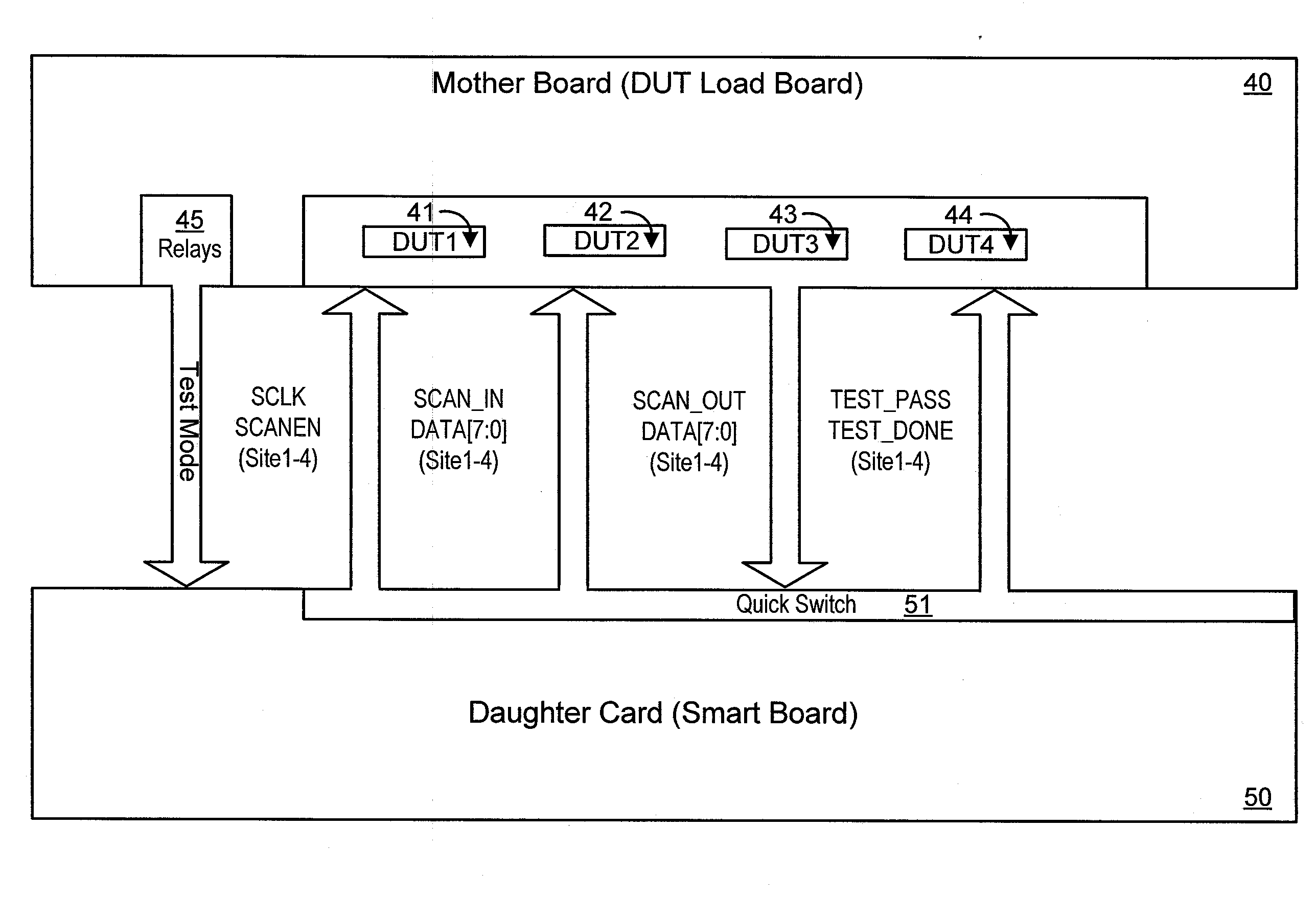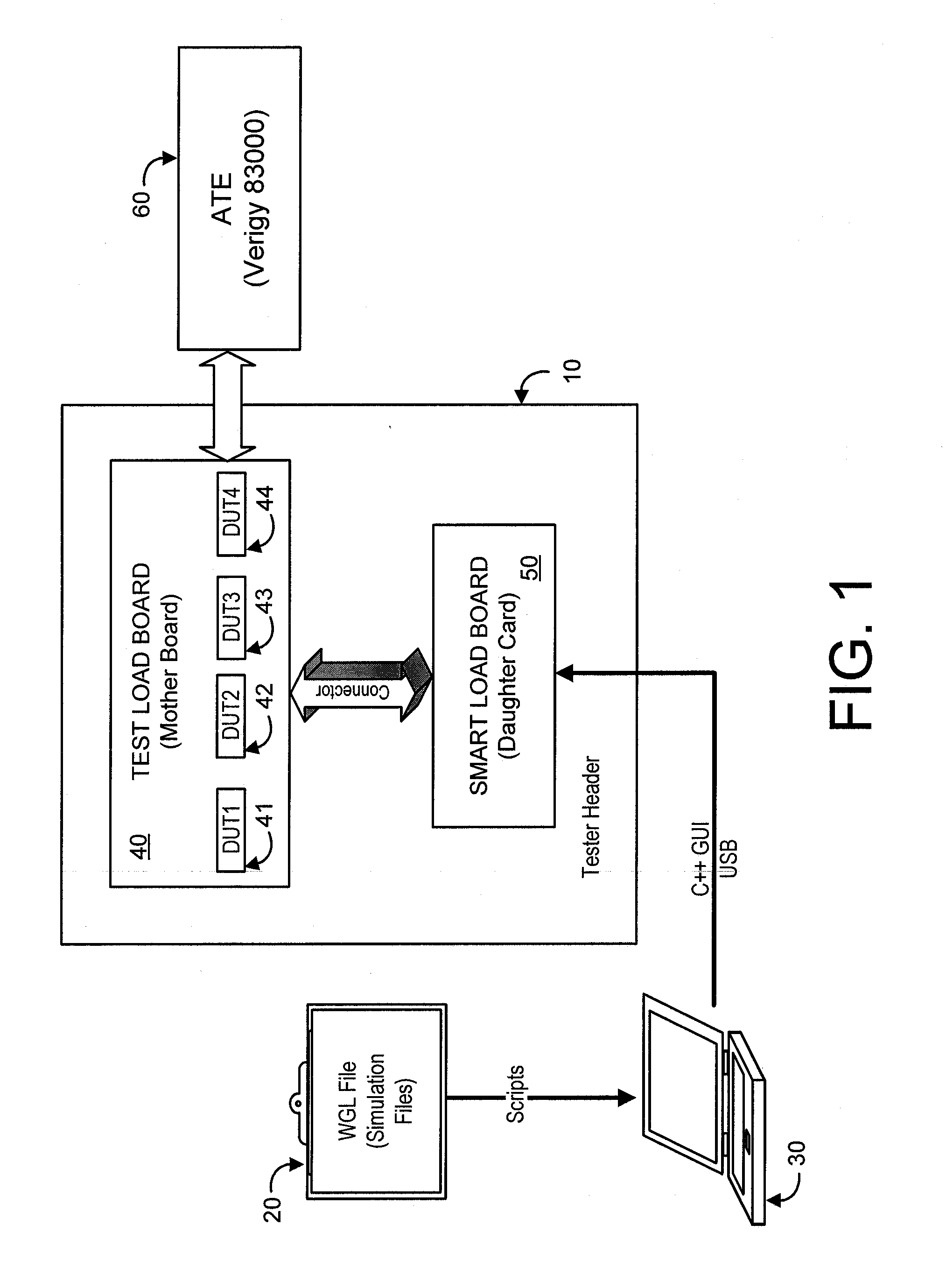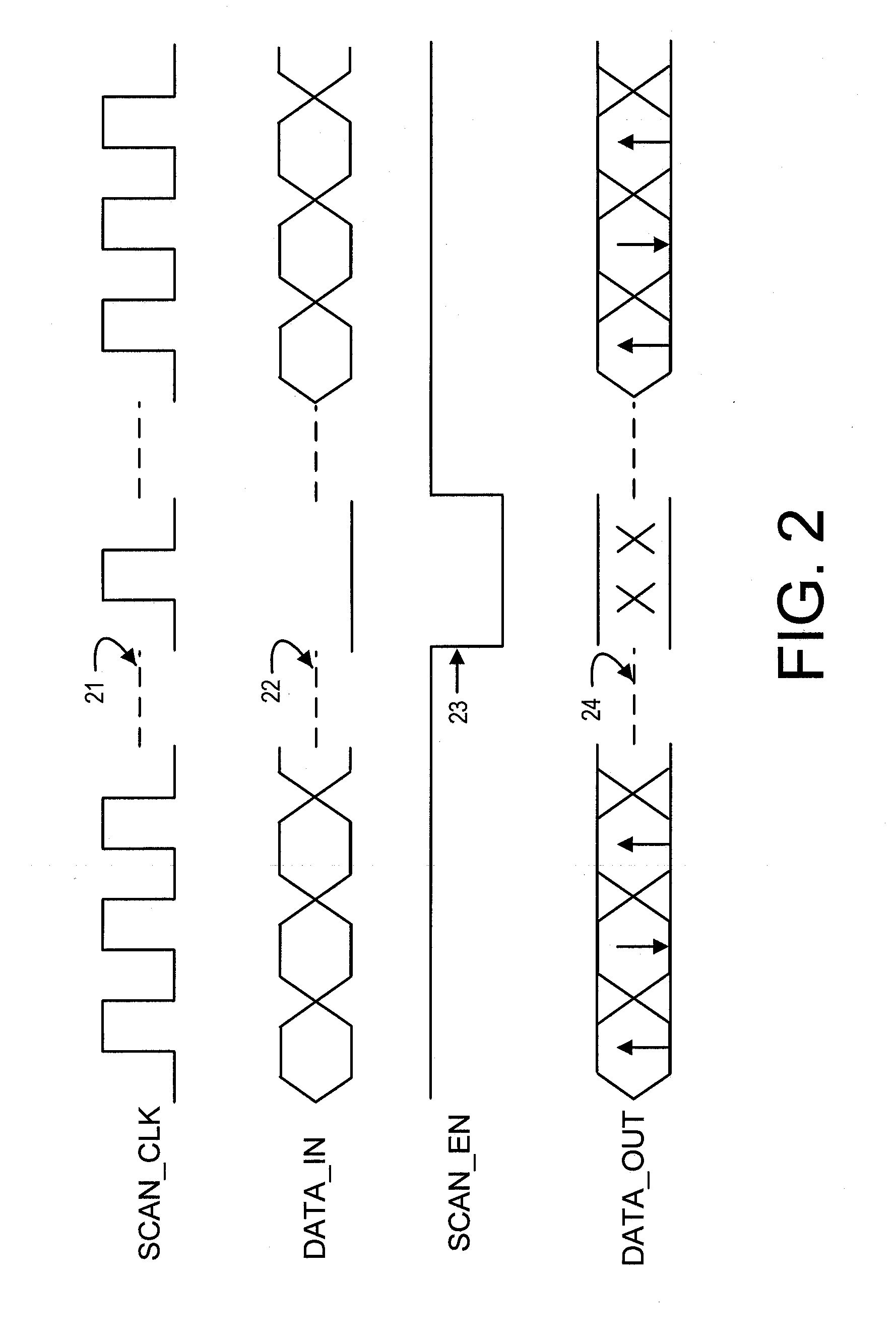Method and Apparatus of ATE IC Scan Test Using FPGA-Based System
a technology of fpga-based system and ic scan test, which is applied in the direction of detecting faulty computer hardware, error detection/correction, instruments, etc., can solve the problem of insufficient resources at the ate system level, affecting and increasing the overall cost of the test system
- Summary
- Abstract
- Description
- Claims
- Application Information
AI Technical Summary
Benefits of technology
Problems solved by technology
Method used
Image
Examples
Embodiment Construction
[0025]Scan test is the most popular design for test (DFT) methodology and is often implemented in register transfer level (RTL) design. Stuck-at-fault, DSM (at-speed) are common scan technologies for capturing manufacturing defects in IC chips. Normally, a scan vector is generated by an automated test pattern generator (ATPG) tool with a standard file format (e.g. WGL, STIL). Depending on device function, feature design and test coverage, the scan vector size can vary. More logic gate implementation and higher error coverage will naturally increase the scan vector size, imposing a higher demand on the memory resources of the ATE system. For scan test program development, scan test vectors are converted into ATE format with timing and level setup. The tester will load scan vectors into vector memory for testing. Therefore, the scan vectors memory size is one key factor for ATE program.
[0026]The Verigy (Agilent sold tester to Verigy) 83000 / 93000 ATE system is one test platform commonl...
PUM
 Login to View More
Login to View More Abstract
Description
Claims
Application Information
 Login to View More
Login to View More - R&D
- Intellectual Property
- Life Sciences
- Materials
- Tech Scout
- Unparalleled Data Quality
- Higher Quality Content
- 60% Fewer Hallucinations
Browse by: Latest US Patents, China's latest patents, Technical Efficacy Thesaurus, Application Domain, Technology Topic, Popular Technical Reports.
© 2025 PatSnap. All rights reserved.Legal|Privacy policy|Modern Slavery Act Transparency Statement|Sitemap|About US| Contact US: help@patsnap.com



